Dolsot (Korean Stone Bowl)
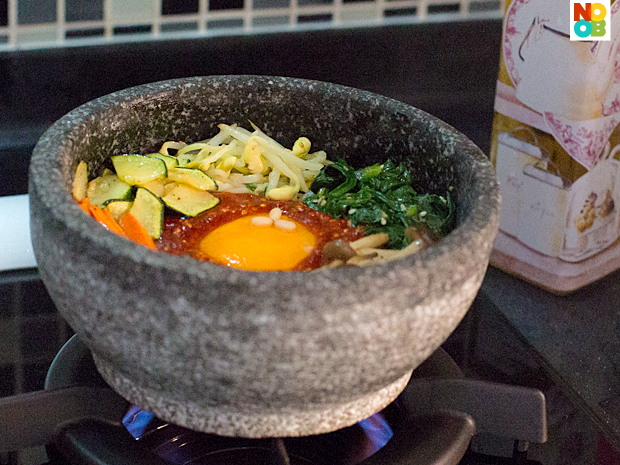
A dolsot (돌솥) is a Korean granite stone bowl (pot) used in Korean cooking, and most notably used in dolsot (hot stone) bibimbap and jigae (stews). The dolsot is a great investment if you are into Korean cooking. It retains heat well and is made from a natural material. I love Korean food so much that I just have to buy one for cooking and serving my favourite bibimbap. I bet any Korean dish will look and taste more authentic when served in a traditional bowl.
See Also:
- Bibimbap (Korean Mixed Rice) Recipe
- Korean Ginseng Chicken Soup (Samgyetang) Recipe
- Easy Korean Recipes
Just like the claypot, you need to learn to good care of it for the dolsot to serve you well in the long run. Here are some tips for dolsot care.
Benefits of dolsot
- The dolsot retains heat well, so it can cook food in a quicker and more effective way. It also keeps the food warm and further slow-cook it, with lid close for at least another half an hour after cooking. You can re-heat and serve the food in the dolsot right away.
- If you coat a layer of sesame oil on the innner walls of the stone bowl when reheating bibimbap, the layer of rice touching the bowl will form a nice crisp crust and also inherit an earthy smoky flavour.
- When the dolsot is sufficiently heated, you can even cook a raw egg against the sides of the dolsot.
- Since the material is porous, it absorbs water (therefore, do not use soap to clean; refer to end of article for cleaning tip). When cooking food, the moisture is released, making the cooked food moist, juicy and tender. There is also less evaporation of water and food do not burn so easily.
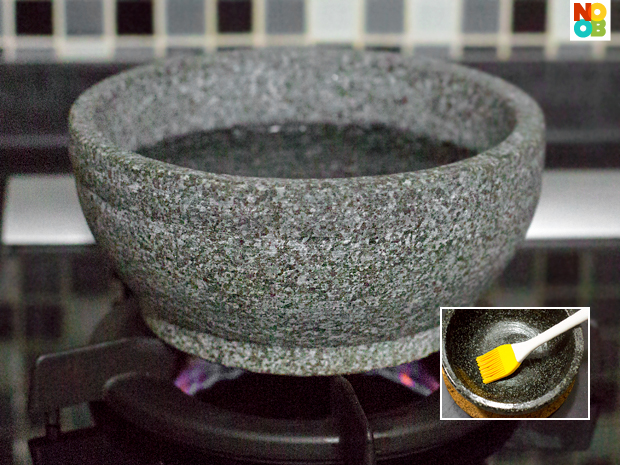
How to prep a brand new dolsot for first time use
- Fill dolsot with water and one tbsp of salt. Place on a very low heat on the hob. Heat the dolsot starting with a low medium heat and increase the temperature gradually. Simmer for 10 minutes.
- At this point in time, the dolsot is really hot so let it cool down a little, and handle the bowl with silicon or thick gloves. Pour away the water, and gently wipe the bowl with paper towels. The bowl will absorb the remaining water and dry on its own after a few minutes. When the bowl is completely dry, use a pastry brush to coat the inside with sesame oil, until the bowl stops absorbing the oil.
- Wipe off excess sesame oil with kitchen paper towel. The dolsot is now ready for cooking. This process of prepping the dolsot creates a non-stick layer on the bowl.
Clean dosol naturally with rock salt, boiling water and a hard bristles brush.
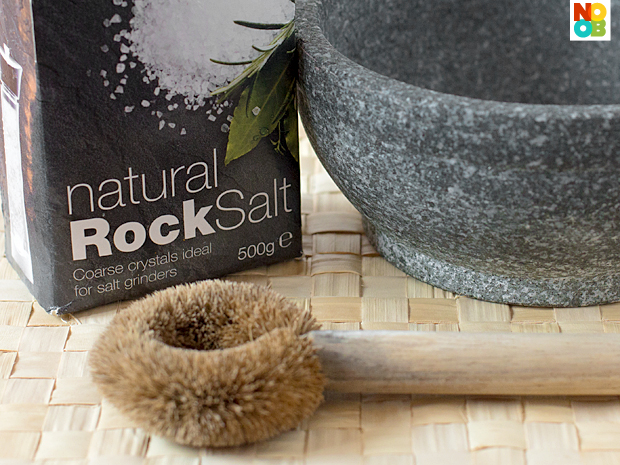
Clean dosol naturally with rock salt, boiling water and a hard bristles brush.
Care for dolsot
- No sudden change in temperature. Dolsot can withstand relatively high heat both on the stove top. However, they cannot withstand sudden fluctuations in temperature so always increase heat gradually. Do not put the dolsot straight away on a hot stove; instead heat the dolsot starting with a low medium heat and increase the temperature gradually. If you took the dolsot out from the fridge, let it rest and return to room temperature before reheating.
- Temperature. Since dolsot conducts and retains heat well, you generally do not need as high heat as you normally need. You can use lower temperature to cook the same type of food, compared to the heat you normally use when cooking in other types of cookware.
- Washing. Add 1 tbsp rock salt crystals (they have more scouring action than fine salt) to the bowl and fill with boiling water. Use a hard bristles brush to scrub vigourously. Rinse. Do not use detergent as the porous material will absorb it. Apart from salt, you can also use other natural cleaning agents such as lemon or vinegar solution. After washing, let the dolsot air dry, then coat the inside with a layer of sesame oil before storing.
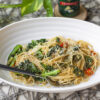
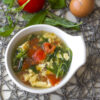

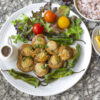
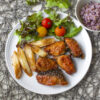
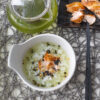
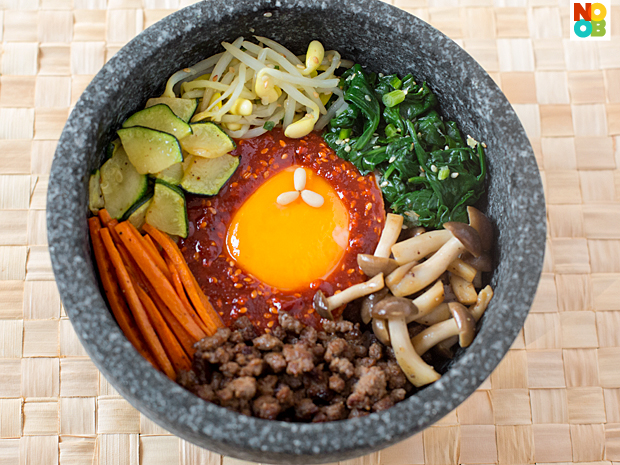



Such a fun way to prepare the food. And it looks very tasty too.
I made bibimbap last week and by the time I served it, it was already not warm. Even if the rice was freshly cooked and warm , it was cooled down by the room temperature veggies-sides assembled atop the rice.
I did made a comment to my hb “sorry, no stone pot, that is why bibimbap is not warm” :D
you finally made it! haha, you have to buy two back next time (if you love and cook bibimbap a lot).
Adds to the authenticity of a Korean dish and it really does a great job of keeping the food warm throughout the meal.
Hi there, Can you suggest an online place where I can purchase this bowl? I am only able to find ceramic ones in my town and not the authentic stone bowls.
Thank you!
No idea where to get it online (you can try amazon), but I think there is a good chance to find it at a Korean grocery shop or supermarket.
Hi,
I have seen a granite dolsot, a stoneware and one made out of agalmatolite. Can you please tell me what you are using? Do you know which material would cook better?
I think mine is made of granite stone.
Pingback: Ming Jia @Bukit Timah Plaza | travelboleh
Pingback: Korean Beef Bulgogi | amalgamation
where can I buy the bowl that is pictured in your photographs?
thank you,
regards, John Gist
I already cleaned dolsot with soap, and it rusted. How can I remove the rust? Thank you in advance
Hi there. I accidently put soap in my housemates’ dolst to soak. How do i get the soap out of it?
My roommate is quite upset with me.
Thanks.